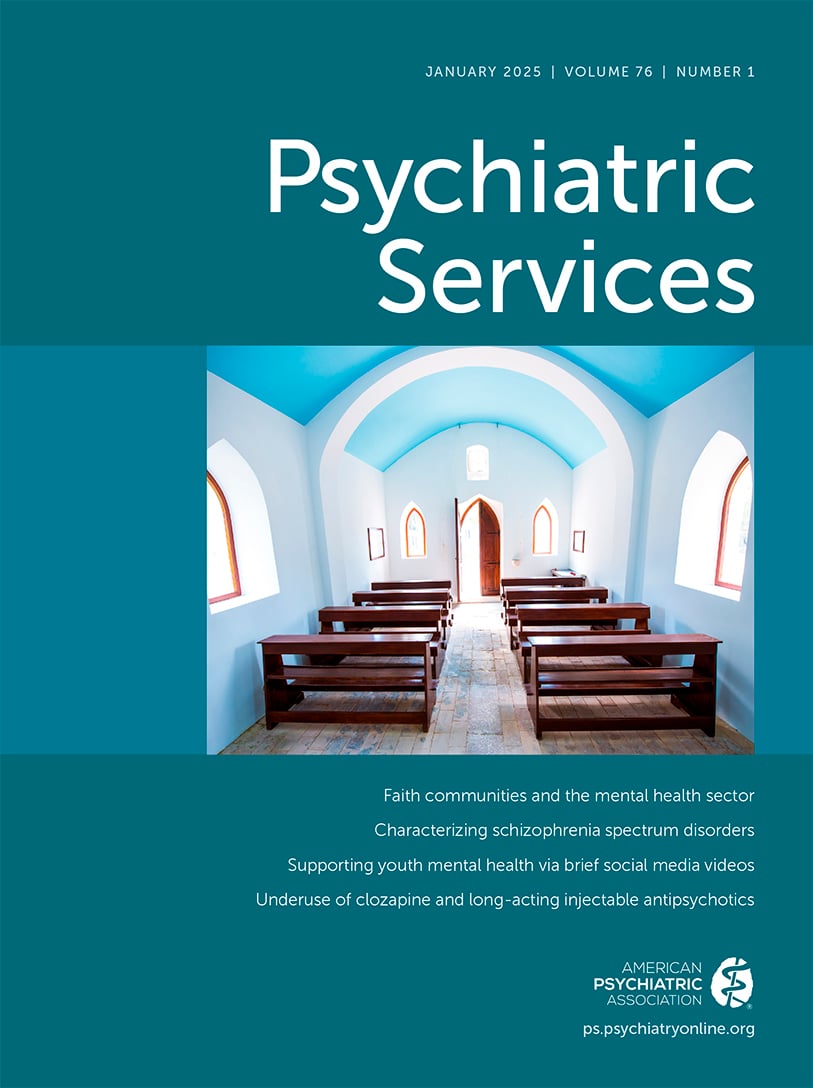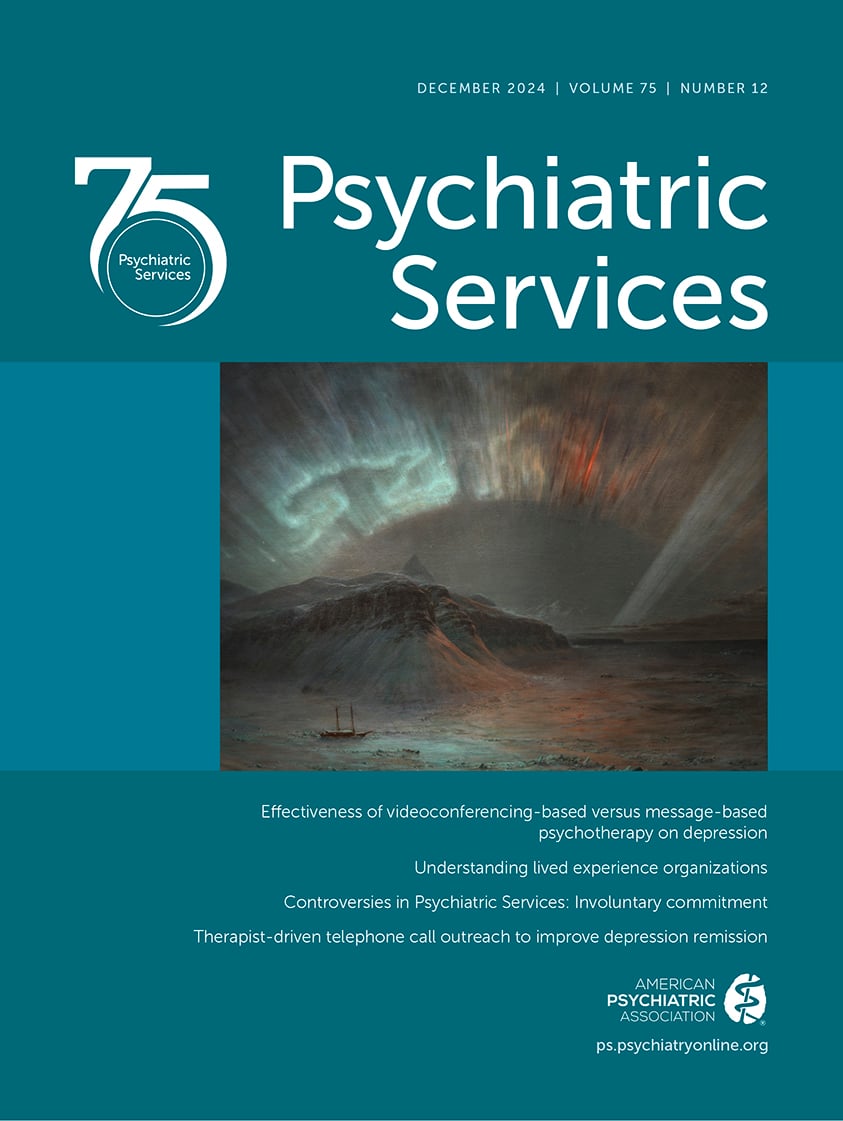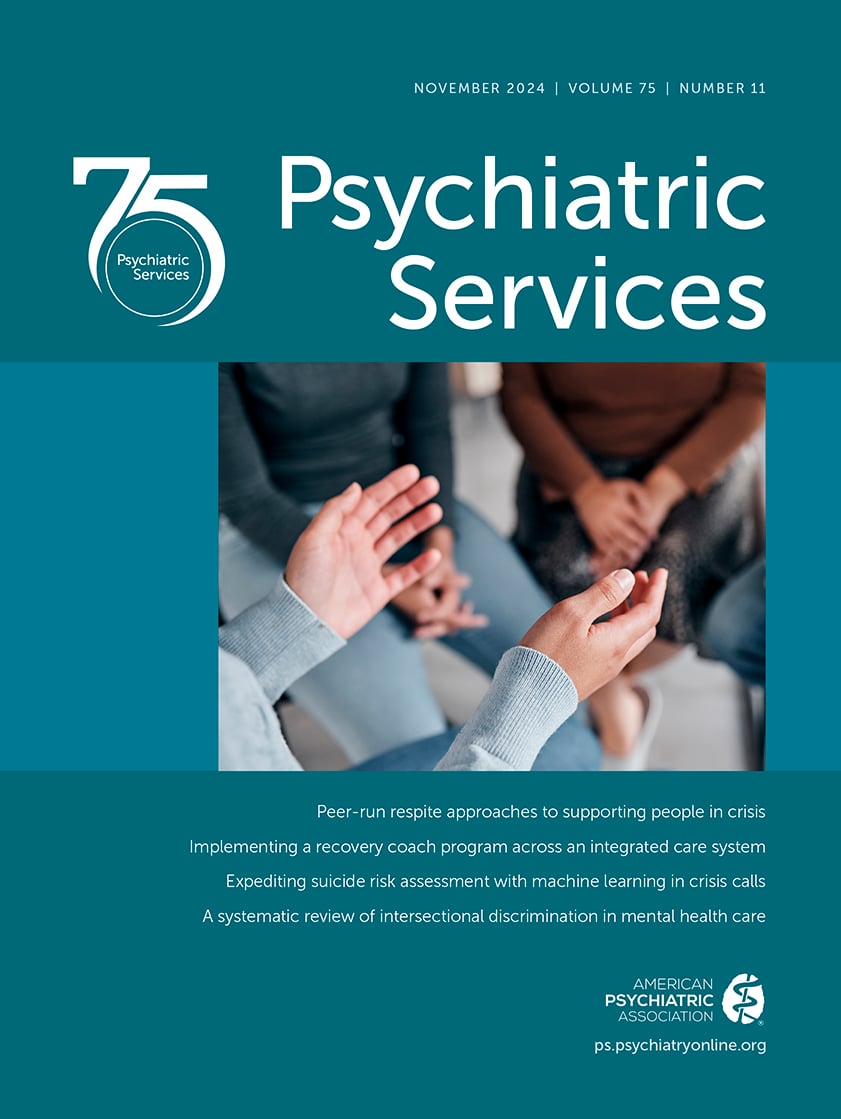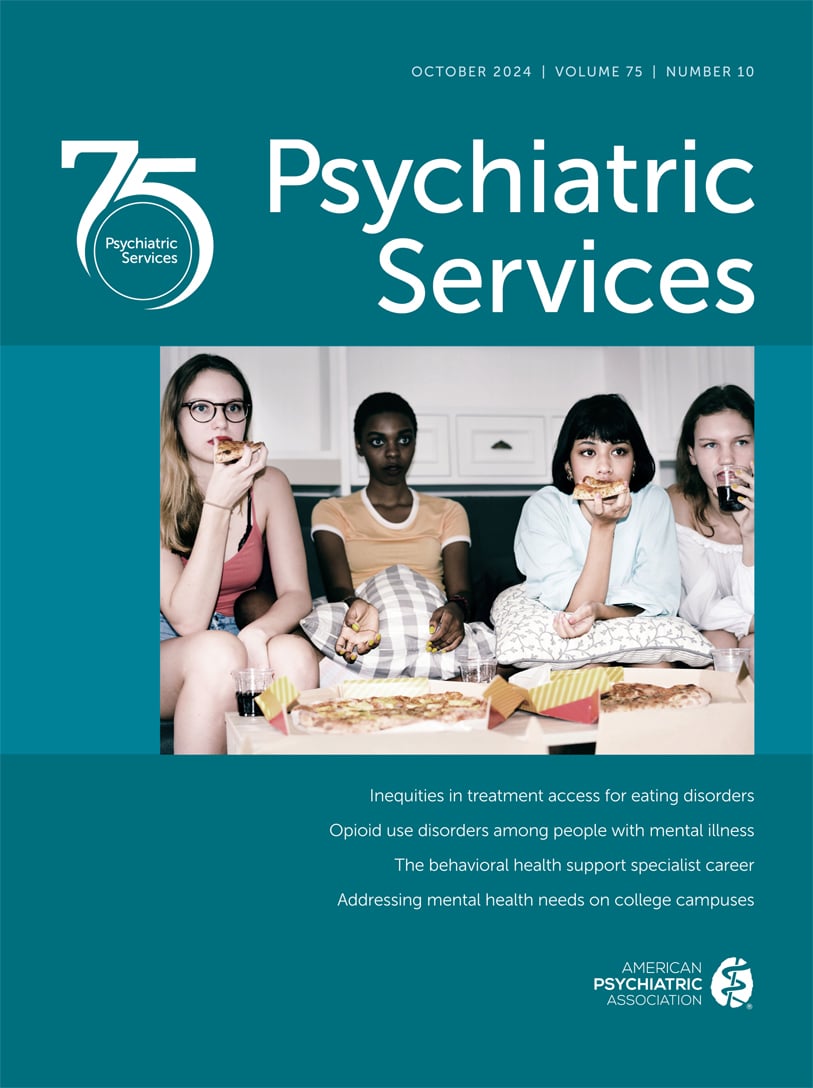Psychiatric Services
- Volume 42
- Number 10
- October 1991
Article
Publication date: 01 October 1991
Pages1007–1013Concern about the spiraling cost of mental health care has increased the need for reliable data about the outcomes of such care. Treatment outcome studies, although difficult to design and carry out, are essential in demonstrating the efficacy of ...
https://doi.org/10.1176/ps.42.10.1007Publication date: 01 October 1991
Pages1015–1021The limited epidemiological data available on borderline personality disorder suggest that the prevalence of the disorder is between .2 and 1.8 percent in the general community, 15 percent among psychiatric inpatients, and 50 percent among psychiatric ...
https://doi.org/10.1176/ps.42.10.1015Publication date: 01 October 1991
Pages1021–1028Borderline personality disorder is common in treatment settings and may be so in the general population. In this guide to assessment strategies for diagnosing borderline personality disorder, the authors discuss the reliability and validity of structured. ...
https://doi.org/10.1176/ps.42.10.1021Publication date: 01 October 1991
Pages1029–1033Biological and psychopharmacological research focusing on patients with a DSM-III-R diagnosis of borderline personality disorder suggests that the disorder may encompass three clusters of symptoms—affective instability, transient psychotic phenomena, and ...
https://doi.org/10.1176/ps.42.10.1029Standardized Approaches to Individual Psychotherapy of Patients With Borderline Personality Disorder
Publication date: 01 October 1991
Pages1034–1038Recent developments in individual psychotherapy for patients with borderline personality disorder indude psychodynamic, interpersonal, behavioral, and cognitive treatments. The author provides an overview of standardized treatment approaches—that is, ...
https://doi.org/10.1176/ps.42.10.1034Publication date: 01 October 1991
Pages1038–1043The authors review cinical and empirical studies on the effectiveness of group treatments and family-marital treatments for borderline patients. These studies support the use of the group format in treating borderline patients, but no empirical study has ...
https://doi.org/10.1176/ps.42.10.1038Publication date: 01 October 1991
Pages1044–1048The portrayal of mentally ill persons in movies and television programs has an important and underestimated influence on public perceptions of their condition and care. Movie stereotypes that contribute to the stigmatization of mentally ill persons ...
https://doi.org/10.1176/ps.42.10.1044Publication date: 01 October 1991
Pages1060–1061Critics of quality assurance continue to assert that existing techniques do not validly measure quality of care because the techniques are unreliable and too subjective. Nevertheless, accreditation and certification, even if based on limited quality ...
https://doi.org/10.1176/ps.42.10.1060Publication date: 01 October 1991
Pages1062–1063This pilot study demonstrates that a large number of adolescents entered the hospital voluntarily and that a surprising number did not want to leave the hospital. Nearly half of those who stated at discharge that they would like further hospitalization ...
https://doi.org/10.1176/ps.42.10.1062Publication date: 01 October 1991
Pages1068–1070Mental health professionals and others have wondered about the mesources necessary to conduct involuntary outpatient treatment and whether these dollars will be well spent. While we do not yet know the answer to this question, and while sound legal ...
https://doi.org/10.1176/ps.42.10.1068Past Issues
View Issues Archive
Vol. 76 | No. 1

Vol. 75 | No. 12

Vol. 75 | No. 11
